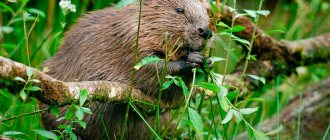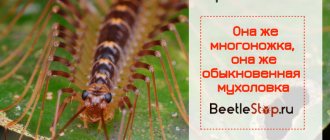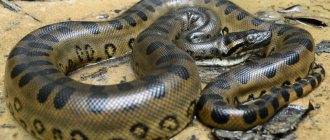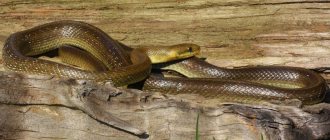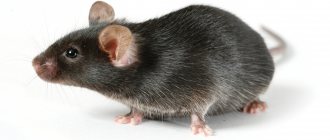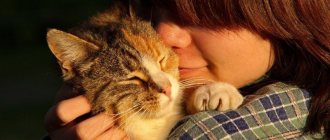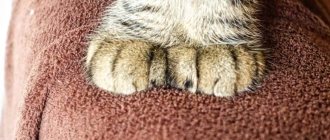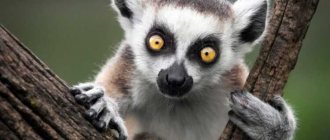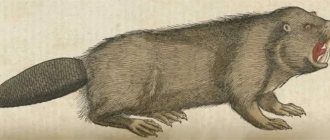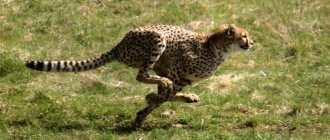Beavers belong to the class of mammals of the rodent order and are quite large - reaching 1 m in length. They are vegetarians and feed on the bark and young branches of trees. The habitat is streams, rivers and lakes in wooded areas. They are deservedly considered excellent builders. They build 2 types of housing - stationary burrows and floating huts. They also usually have strong families.
There are 2 types of beavers: Canadian and common, differing in the number of chromosomes (40 and 48, respectively). The latter has 8 subspecies in modern taxonomy.
What does a common beaver look like?
The appearance of the rodent has the following features:
- the body is round and squat;
- the hind legs are better developed, on the front legs the first toe is opposed to the rest;
- the head is round, large, with small ears and a slightly elongated muzzle;
- The rodent has two pairs of incisors protruding forward, the teeth do not have roots and grow throughout life, they are gradually worn away while grinding trees and eating hard food:
- the tail is wide, long and flat, covered with keratinized skin.
The hair of a rodent consists of hard guard hairs and a very thick and soft down. The color of the fur can vary from light brown to black-brown. The most valuable are the skins of animals with black fur.
Varieties
In modern taxonomy, there are 8 subspecies of the common beaver, which are distinguished mainly by territorial affiliation.
Nutria
Sometimes the Kamchatka beaver (sea otter) or swamp beaver (nutria) is mistakenly classified as a species.
sea otter
Emblematics
Emblems depicting a beaver in “Emblems and Symbols” - 309, 203, 204, 542, 559.
Beaver gnawing on a large tree
A symbol of hard work and perseverance. EMSI tab.57-7, p.346 |
A beaver pursued by hunters bites off its testicles to escape, as it knows that it is for the sake of its testicles that it is being hunted
You can sacrifice a lot to save a life. Our condition and everything that we have that is most valuable (with the exception of virtue and honor) cannot be compared with life. EMSI tab.57-5, p.346 |
Characteristics and description
The beaver is a semi-aquatic mammal whose body structure is adapted for long stays in water. While searching for food, the animal can dive under water and remain there for 15 minutes. When diving, the beaver's nose and ears close, and its transparent eyelids close. The toes of the hind paws are connected by webs. In the animal's mouth, behind the incisors, there is a special membrane that prevents water from entering the digestive tract while in a river or lake. This structure of the oral cavity allows the beaver to gnaw off parts of plants and chew them under water.
The common beaver has excellent hearing and sense of smell. Echolocation also helps him navigate space. A well-developed ability for echolocation allows the rodent to quickly move in dark burrows, as well as find food when diving into water in the dark.
Dimensions and weight
The common beaver is a fairly large rodent. The average size of a beaver reaches 1.2-1.3 m, and its weight is 25-30 kg. The length of the tail in adults ranges from 27 to 35 cm with a width of 10-13 cm.
How many years do they live
The lifespan of a common beaver in natural conditions does not exceed 10-15 years. In captivity, they live much longer: cases have been recorded of rodents living up to 35 years.
Lifestyle
Beavers are active in the evening and at night. Rodents leave their homes at dusk and search for food and build until dawn.
Burrows
Beavers build two types of housing: burrows and huts. Burrows are established in places with a steep, high bank and a relatively stable water level. If digging a hole is impossible for some reason, the animal builds a hut: first, branches are placed in a cone, then they are fastened and coated with clay and earth, a passage is dug from the dwelling, the exit of which is below the water level.
Hut
In bodies of water with frequently changing levels, beavers build dams from fallen trees, branches and stones. Thanks to this, the entrances to holes and huts remain under water and are inaccessible to unwanted guests.
Rodents form families of an adult male, a female and young of different ages. Eurasian beavers are monogamous. Genetic studies of several generations of the cubs of one couple have shown that animals not only live with their partner all their lives, but also remain faithful to him.
How do they winter
The beaver's behavior during the winter months largely depends on climatic conditions. Animals do not hibernate in winter, feed and lead their usual lifestyle, but at the same time there is a certain decline in activity and a slowdown in metabolic processes. Metabolic depression is expressed by a slight drop in temperature.
If there are areas of a river or lake that are not covered with ice near a beaver’s home, it periodically goes outside to search for food. When the temperature drops to -15-20 degrees or the surface of the water completely freezes, beavers do not appear on the shore and are in the hole almost all the time. Periodically, they make short swims under the ice to feeding areas or to warehouses with food supplies.
CHINCHILLA
Where does the common beaver live?
You are welcome...
The historical range included the entire forest-meadow zone of the Eurasian continent. The current distribution area of the species covers Scandinavia, Great Britain, central and eastern Europe, some regions of the Far East, northern China and Kazakhstan.
Where live
The natural habitat of the common beaver is lakes and rivers with a large amount of coastal vegetation, including trees and shrubs. Rodents prefer forest reservoirs, as well as small rivers without rapid currents, but can also be found in deep rivers.
An unsuitable habitat for a beaver is a coastal zone near a shallow, freezing and severely drying body of water. Animals also avoid areas with significant changes in water level during floods and floods.
What does it eat?
Oh, the story ends...
Based on the type of nutrition, rodents are classified as herbivores. The beaver's diet includes about 200 species of hydrophytes, hygrophytes, and trees and shrubs. The animal's digestive system is adapted to the consumption of bark and other tough plant foods. In addition, beavers are coprophages. Periodically eating excrement with the bacteria it contains speeds up the digestion of stomach contents.
The composition of the diet depends on the time of year: in summer it is more varied and it is dominated by leaves and young shoots of plants; in early autumn, rodents switch to the bark and branches of bushes and trees. Beavers stock up on food for the cold season: in the fall, they take everything that could be useful for food into warehouses set up near their burrows. Animals chew through tree trunks, separate branches and small parts of the trunk and take them to storage. The roots of plants growing in water are also placed there. Due to the low water temperature, all beaver reserves are well preserved and allow the animal to survive the winter.
How do they reproduce?
Whispers in your ear... And then I’ll build a big hut
The common beaver reaches sexual maturity at the age of 3 years. The breeding season for rodents begins at the end of February, when they leave their home for the first time after winter, and lasts about a month.
During the rut, males and females leave noticeable, strong-smelling marks in the area around their home. Beavers mate primarily in water. After 3.5 months, the female beaver gives birth to offspring. Usually there are from 1 to 5 cubs in one litter, with older individuals giving birth to a larger number of babies.
Mom, get up and play...
Up to a month, beaver cubs feed only on mother's milk, then they begin to gradually switch to plant food and by 2 months they become completely independent. For two years, young individuals continue to live with their parents, forming a family. Before the onset of sexual maturity, the juveniles separate and look for a place to build their own home. Young beavers can settle in the immediate vicinity of their birthplace or migrate, sometimes moving 100 km or more from their parental home.
Art
The popularity of Aesop's fable in the ancient world is evidenced by a grotesque passage from Apuleius' Metamorphoses concerning a witch's punishment of an unfaithful lover:
“With one word, she turned her lover, who dared to love another woman, into a beaver, since this animal, when in danger of being captured, saves itself from pursuit by depriving itself of its reproductive members; she hoped that something similar would happen to the one who took his love to the side.” Apuleius. Metamorphoses. 9
The mention of the beaver in Dante looks mysterious:
“How, where the greedy German lives, the beaver sits down to wage his war” “The Divine Comedy.” Hell (17. 21-22)
Number
Changing the population size of the common beaver is a classic example of how humans can influence nature. The extermination of animals for fur, glands and meat led to the fact that at the beginning of the 19th century they practically disappeared from their natural habitat. The total number of beavers at this time did not exceed 1-2 thousand individuals. Thanks to the measures taken to protect and breed rodents, as well as their active settlement throughout the territory of our country, by the beginning of this century the situation had improved significantly. According to population census data, at the beginning of the decade, more than 300 thousand individuals lived in Russia. Currently, constant monitoring of the animal’s habitats and its numbers is being carried out.
In regions where population sizes do not cause concern, beaver hunting is permitted during certain periods and under licenses.
The common beaver is in the Red Book of Russia. The register includes such subspecies as the Tuvan or Asian river beaver and the West Siberian river beaver. Some varieties are included in regional Red Books.
Literature
- AUAF
- Aesop's Fables. 118 <AUAF
- Herodotus. Story. IV. 109 <AUAF
- Pliny. Natural history. 8.47; 109 <AUAF
- Elian. About the nature of animals. VI. 34 <AUAF
- Apuleius. Metamorphoses. 1.9 <AUAF
- "Physiologist", p. 139—140 <AUAF
- Isidore of Seville. Etymologies. XII. 2. 19-21; XIX. 27.4 <AUAF
- Hrabanus. De rerurn naturis. VIII. 1. (PL. Ill, 222C) < AUAF
- Serapion. 291 <AUAF
- Timothy from Gaza. About animals. 54. 1-7 <AUAF
- English bestiary, l. 14 rev. <AUAF
- De Bestiis et alis rebus. II. 9 <AUAF
- Dicta Chrisostomi, l. 52 <AUAF
- Thomas Cantirnpratensis, IV. 4, 3-6 <AUAF
- Albert the Great. About animals. XXII. 39 <AUAF
- Ibn Sina. Canon. 139 <AUAF
- al-Biruni. A book about medicinal substances. 270 <AUAF
- "Wonders of the World". 184 <AUAF
- Zakariya al-Qazwini, fol., 78r, 9 < AUAF
- ABC book. 1027 <AUAF
- Keppen F. About the previous and current distribution of the beaver within Russia // ZhMNP. 1902, July. Part 342. No. 7.
- Mokienko V. M. Kill the beaver // Russian speech. 1979. No. 5. P. 64-67.
- Skalon V.N. River beavers of Northern Asia. M.: L., 1951.
- Sorokina T. G. The image of a beaver in the ritual ornamentation of the Paleolithic era // Animals and plants in mythological and ritual systems. Materials of the scientific conference. October 1996. St. Petersburg, 1996.
- Fedyushkin A.V. River beaver, its history, life and breeding experiments. M., 1935.
- Tsalkin V.I. Materials for the history of cattle breeding and hunting in Ancient Rus' //MIA. 1956. No. 51.
- Malaxecheuerria 1. Castor et lynx me'die'vaux: leur se'ne'fiance //Florilegium: Carleton University Annual Papers on Classical
- Antiquity and the Middle Ages. 3. 1981. P. 228-238.
- Perry V. E. Physiologus //RE Neue Reihe, XX, 1. Stuttgart, 1941. Sp. 1088.
- Wellmann M. Der Physiologus. Eine religionsgeschichtlich-naturwissenschaftliche Untersuchung (Physiologus, Supplementband. Bd. XXIL 1). Leipzig, 1930. S. 29.
- SHES
The meaning of beaver in nature
Rodents are among the few species that change the natural landscape. For a long time, the animals were classified as pests for their ability to fell trees, but research conducted by the Wildlife Conservation Society (WCS) has proven the importance of these rodents for ecosystems.
Beaver dams retain silt and help clean the reservoir. Dams built by beavers provide a stable water level, which has a beneficial effect on coastal vegetation. Waterfowl settle in such places and often carry fish eggs on their feet. If beavers do not have time to process a fallen tree overnight, they abandon it, providing food for animals that feed on branches and bark. The sap flowing from the places where beavers undermine the trunks serves as food for insects.
The area transformed as a result of activity is called a beaver landscape.
MOLE
Positive factors
The environment-forming influence of the beaver on the ecosystem can and should be used in solving practical human problems, as both environmental authorities and numerous researchers in various fields (from economics to agriculture) believe.
Beavers are capable of:
1. Quickly but naturally change the hydrological regime of a region or specific area. These animals are characterized by the formation of local swampy-aquatic ecosystems.
2. Changing the direction of river channels to redirect water resources and regulate flow.
3. Increasing the number of representatives of near-water flora and fauna, hydrobionts and amphibians. Mammals that eat plant and shrub food (hares, moose and deer) get more food - they willingly eat the bark and greenery left by beavers (which is from 30 to 60% of the total mass) of aspens and willows. Birds colonize beaver territory very quickly, since the spread of insects occurs almost at lightning speed due to the presence of dying or significantly damaged trees in flooded areas. Also, they are the main food of lynxes, whose extinction also frightens conservationists.
4. Improving the quality of flowing water due to the deposition of pollution by beaver dams.
5. By removing aspen from a specific area, they contribute to the spread of an already rare species of black alder.
6. The holes left by beavers become the home of badgers, otters, minks and muskrats.
The life activity of beavers in all its aspects (wood removal, construction, active reproduction) has a broad impact on the ecosystem.
Interesting facts about beavers
- At the beginning of the last century, beavers were close to extinction. The main reason for the extermination of rodents is the extraction of fur and glands (beaver stream). The creation of protected areas, resettlement and protection of the animal made it possible to significantly increase the population.
- The rodent knocks down trees with a trunk diameter of up to 10 cm in 10-15 minutes. In Germany, a case was recorded when a poplar tree with a trunk thickness of about 2 m was felled by beavers.
- The largest beaver of all known species is a now extinct rodent from the genus of giant beavers. Judging by excavation data, the beaver that lived in North America reached a length of almost three meters and weighed more than 300 kg.
- Beaver meat was eaten by many peoples. It is quite tender and nutritious, with the most delicious and healthy composition being beaver tail. In the Middle Ages, due to the presence of a non-haired tail on the animal, beaver, like fish, was allowed to be eaten during religious fasts.
- In Russian there are the words “beaver” and “beaver”. In the first case, we are talking about a rodent, and in the second, about a tanned animal skin or a product made from it.
- Beavers take very good care of their fur, brushing it regularly and lubricating it with oil that repels water. The forked claws on the hind legs make it possible to comb out the fur well.
Christianity
The early Christian “Physiologist” repeats the fable plot, giving it a new symbolic meaning:
“
About the animal beaver
.
There is an animal called beaver. He is very meek and silent. Mostly it is used in treatment. And when he is being pursued by hunters and he realizes that he will be caught, he cuts off what he needs and throws it to the hunter. If he is again caught by another hunter and is pursued, the beaver throws himself on his back, and the hunter, learning that he does not have what he needs, leaves him. Interpretation
. And you, resident of the city, give the hunter what is his. The hunter is the devil, and what is his is fornication, adultery, and murder in you. Cut it off and give it to the devil, and the hunter, the devil, will leave you, so that you too can say: “Our soul, like a bird, has freed itself from the snare of those who hunt.” "Physiologist", p. 139—140
In previous descriptions, the beaver is not at all a meek and helpless animal. The natural characteristics of the animal, other than the fable plot, are not reported, but the following detail appears: if the beaver is caught again by another hunter, it throws itself on its back so that the hunter, making sure that there are no testicles, lets it go. [5]
“
Beaver - κάστωρ
[6] Due to the fact that the beaver has a large and wide belly, it is called “castor” instead of “gastor”.
It is an amphibian and lives in burrows near water. [It is] larger in size than an ichneumon[7] and with its teeth it knocks down large trees, gnawing them down at the roots. Beaver clothes are made from it. His testicles are an integral part of various medicines, and, being consequently pursued by hunting dogs and people and realizing the reason, he tears them off with his claws and runs away. But when he is already without testicles and he is being persecuted again. he jumps up and shows that he doesn't have [testicles]. It often changes its burrows for fear of being caught by hunters. However, he is caught at night, because he is afraid of fire and remains motionless, and the hunter, having a torch, gets so close that he can grab him. The beaver lives near water, like saterion, latax[8], enudr and saperion, from which clothing is made.” Timothy from Gaza. 54. 1~7. “ Castores
(Greek: beaver) comes from the word “to castrate,” because their testicles are suitable for making medicine. And also, when they sense a hunter [approaching], they castrate themselves and cut off their male power with bites. About them, Cicero in Scaurus’s defensive speech [says]: “they pay off with that part of the body for which they are most often sought.” Juvenal [writes about beavers]: “who makes himself a eunuch, wanting to hide by causing damage to his testicles. They are also called beavers (fibri) and even Pontic dogs.” Isidore of Seville. Etymologies (XII. 2.19)[9]
The information about the beaver in the French bestiary of the 13th century goes back to the Etymologies.
Over time, the beaver appears as the personification of a saint who has rejected the vain world:
“It’s time for us to study the nature of the beaver. From time immemorial to this day, our tailed hero is known to medicine as a healing gland. The quiet beaver is ready, when he is being chased, not only to bite off his tail. The Persecuted One satisfies the hunting greed. Without flinching, he emasculates himself hastily, loving Freedom. Hunters without game, Although not without prey. Hunt later It is not worth following the beaver. The humble beaver is deprived of a precious gland. In truth, the cripple is being persecuted in vain. Such a crippled beaver is a prototype of a man who is holy in spirit. When pitch hell is on the hunt, Satan seeks not only mortal flesh. He needs a soul. He catches up with the saint, fools him, seduces him, hoping for success: he would only lead him into sin! And the trap is ready, But how to deceive a saint? He's happy to give up his body. There is an adversary in the lining. The soul, having left the body, flew up to heaven. You will learn goodness thanks to the beaver.” Poetic bestiary of Philip Tansky
Depictions of beavers in medieval bestiaries often resemble dogs, since beavers were called Pontic dogs (Dicta Chrisostomi, l. 52).
